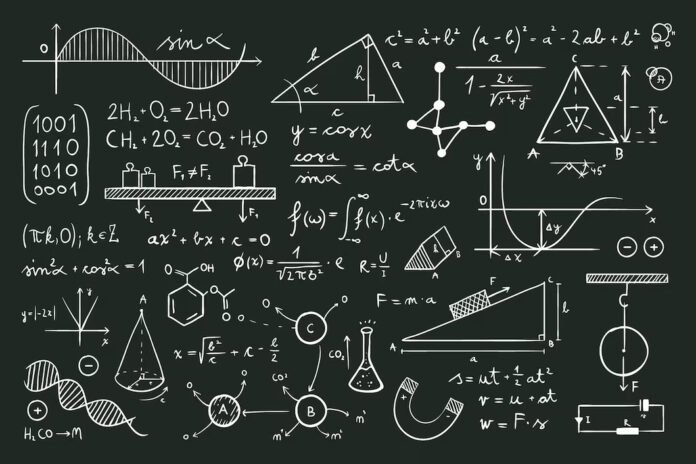The National Council of Educational Research and Training (NCERT) is a governmental organization that develops and publishes textbooks for various academic levels in India. The NCERT Class 12 Physics Index is a comprehensive guide that outlines the syllabus, chapters, and topics covered in the Class 12 Physics textbook.
Contents of Class 12 Physics Index
The NCERT Class 12 Physics Index comprises 15 chapters that cover a broad range of topics related to Physics. Each chapter is further divided into sections, subsections, and sub-subsections, making it easier for students to navigate and understand the content.
The following is a brief overview of the 15 chapters covered in the NCERT Class 12 Physics Index:
Chapter 1: Electric Charges and Fields – This chapter covers the basic concepts of electric charges, electric field, Coulomb’s law, and electric potential.
Chapter 2: Electrostatic Potential and Capacitance – This chapter deals with the concepts of electrostatic potential, potential energy of a system of charges, capacitance, and various types of capacitors.
Chapter 3: Current Electricity – This chapter focuses on the concept of electric current, Ohm’s law, resistance, resistivity, and various other electrical circuits.
Chapter 4: Moving Charges and Magnetism – This chapter deals with the magnetic force on a moving charge, Biot-Savart’s law, Ampere’s law, and the magnetic properties of materials.
Chapter 5: Magnetism and Matter – This chapter covers the various types of magnets, magnetic properties of materials, magnetic field due to a current, and Earth’s magnetism.
Chapter 6: Electromagnetic Induction – This chapter focuses on Faraday’s laws of electromagnetic induction, Lenz’s law, eddy currents, and various other topics related to electromagnetic induction.
Chapter 7: Alternating Current – This chapter deals with the generation of alternating current, the RMS value of an AC, LC oscillations, and various other topics related to AC circuits.
Chapter 8: Electromagnetic Waves – This chapter covers the properties of electromagnetic waves, electromagnetic spectrum, and various other related topics.
Chapter 9: Ray Optics and Optical Instruments – This chapter deals with the reflection and refraction of light, lenses, and various optical instruments.
Chapter 10: Wave Optics – This chapter focuses on the interference, diffraction, and polarization of light waves.
Chapter 11: Dual Nature of Radiation and Matter – This chapter covers the concept of wave-particle duality, photoelectric effect, and various other topics related to the quantum nature of radiation and matter.
Chapter 12: Atoms – This chapter deals with the structure of atoms, Bohr’s atomic model, and various other topics related to atomic physics.
Chapter 13: Nuclei – This chapter covers the structure of the nucleus, nuclear force, radioactivity, and various other topics related to nuclear physics.
Chapter 14: Semiconductor Electronics: Materials, Devices and Simple Circuits – This chapter focuses on the basics of semiconductors, p-n junction diodes, transistors, and various other topics related to semiconductor electronics.
Chapter 15: Communication Systems – This chapter covers the basics of communication systems, amplitude modulation, frequency modulation, and various other related topics.
Importance of Class 12 Physics Index
The NCERT Class 12 Physics Index is an essential guide for students studying Physics at the Class 12 level. It provides a comprehensive overview of the syllabus, which helps students plan their study schedule and prioritize topics.
Moreover, the NCERT Class 12 Physics Index also serves as a reference guide for teachers, helping them plan their lessons and assessments in alignment with the syllabus. It is also a useful resource for students preparing for competitive exams like JEE and NEET, as the content covered in the NCERT textbooks is considered to be the foundation for these exams.
The NCERT Class 12 Physics Index is designed to be student-friendly, with clear and concise explanations of the concepts, diagrams, and examples. The index also includes practice questions, exercises, and numerical problems at the end of each chapter to help students reinforce their understanding of the concepts.
Additionally, the NCERT Class 12 Physics Index is available in both English and Hindi languages, making it accessible to a wider range of students across the country.
Recommended Articles:
Cherenkov Radiations: Introduction, Properties, Effect And Uses
Circuit Component: Active, Source, Transistor, and Components
Circuit Diagram: Introduction, Example,Types, & Circuit Diagram
Class 8 Physics Index
Class 11 Physics Index
15 Yes The importance of the index is It provides a comprehensive overview of the syllabus, which helps students plan their study schedule and prioritize topics. Two Class 12 Physics Index FAQs
How many chapters are there in class 12 Physics?
Is the physics index available in both Hindi and English?
What is the importance of index?
How many chapters of class 12 deal with optics?
